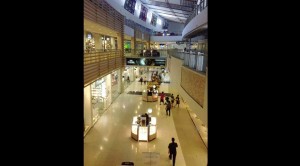What is energy management?
When people are asked, “What is the best way to reduce energy costs in a building or a house?” their instant reply is “by using solar panels or windmills to generate energy.” You will hardly ever hear them say “through energy management.”
It’s usually the last thing they will mention. There seems to be a low level of awareness of what is energy management even in many established organizations. Many are not aware that it is a very effective strategy that can be applied in offices and houses.
What is energy management? It is an efficient way of monitoring, controlling and conserving energy in a building or organization.
Why is this discipline important?
• First, it reduces costs, particularly at this time with energy costs continuing to skyrocket.
• It reduces carbon emissions with its accompanying environmental damage.
• More and more companies and organizations are improving their image in the business community as good stewards of the environment by reducing their carbon footprint.
• More energy consumed could affect profitability unless demand is reduced and controlled to make it more predictable.
Four basic steps
What you cannot measure cannot be controlled. This applies very well to energy management. The first step starts with metering energy consumption and collecting the data.
The conservative way is to manually collect data by reading meters once a week or once a month. The problem with this approach is your readings cannot show you how much you’re using at different times of the day or the week.
With detailed interval energy consumption data, measuring and recording data is done automatically at regular intervals of 15 to 30 minutes. This establishes a pattern for you to identify the routine waste in your building.
The second step is to identify the opportunities to save energy with the data you have collected. This can include finding routine energy waste. Through energy management, it is easier to spot why there is an increase of energy usage, particularly during weekends when there is no office work.
The third step is to implement those energy-saving opportunities, whether they involve upgrading the chillers or retrofitting the glazing in your windows. Another way is to get the cooperation of the building occupants so that they can join your program to save energy.
The fourth step is to monitor your progress. If you have installed equipment that are supposed to help you save energy, you will have to closely monitor if they are indeed saving energy. This includes sensors, control-equipment settings and timers.
Outstanding example
In the Philippines, the Marquee Mall in Angeles City, Pampanga, which was second runner-up in the 2012 Asean Energy Management Awards, is built on a 53-hectare mixed-use development of Ayala Land. It has a gross floor area of over 58,000 square meters and gross leasable area of over 38,000 sq m.
It won the prestigious awards because of several features such as its accessibility, thus reducing the area’s overall fuel requirements.
Many of the circulation areas do not require air-conditioning. Clerestory windows are extensively used in the premises, thus bringing in natural light further reducing energy requirements.
Variable frequency drives are used for motor-driven devices especially for chilled water pumps, thus generating energy savings of more than 20 percent.
Automated water treatment for cooling towers are equipped with sensors that automatically signal the system to send e-mail alerts to mall property managers and engineers in case of abnormalities.
Depending on the ambient temperature, the chiller set-point is adjusted to 48 degrees Fahrenheit to save on the chiller’s energy consumption without sacrificing the cooling comfort.
Escalators are provided with automatic sensors. LED lighting is used extensively for the general lighting and signages.
The energy-efficiency index of the mall is 125.17 kWh/sm per year which is below the Asean benchmark of 200 kWh/sm per year.
For comments or inquiries, e-mail amadodejesus@gmail.com.

